Spain is home to some of the most unique festivals and traditions around the world, and La Tomatina is no exception. La Tomatina is a festival that Spanish teachers should be sure to share with their classes. Every year, people participate in the world’s largest food fight, La Tomatina in Spain, but how can we bring even a fraction of that excitement and energy into teaching about La Tomatina? Here are some of my favorite ways to teach La Tomatina.
What is La Tomatina?
Every year, on the last Wednesday of August, in Buñol, Spain, you will find tomatoes soaring through the air in a real-life food fight! Since 1945, locals and tourists have participated in the annual tomato fight in the streets of Buñol. The history of this colorful festival is a bit murky… some people believe a food fight broke out during a parade; others believe a group of teenagers were rough housing during a small festival and knocked over a vegetable cart. No matter what the origins are, what matters is that to this day, La Tomatina still lives on!
Beginning early in the morning, the participants come prepared to the streets, equipped with goggles, waterproof bags, and old, white t-shirts. Trucks filled with over 120 tons of tomatoes roll into the community, ready for battle! These tomatoes are over-ripe, low-quality tomatoes, not edible, so there is no waste. Before the festivities can begin, one brave participant must climb a greasy pole to reach a ham that is perched at the top. Once the ham is reached, the fight can begin!
For one hour, the participants throw tomatoes at one another. This is not a festival for a neat freak! By the end of the hour, you will be covered from head to toe in acidic tomatoes, but fear not… the acid is a natural exfoliator! Fire trucks then come to wash the streets clean as participants head off to after parties or local cafés.
How can I teach about La Tomatina?
So, we know we’re not in Spain and our students can’t actually participate in La Tomatina, but that doesn’t mean we can’t bring La Tomatina to life in our classroom! Here are 7 exciting ways to teach La Tomatina to your Spanish students.
First Day of School Activity
On the first day of school, I always recreate La Tomatina! I begin Day 1 of Spanish class with a quick intro and video about La Tomatina. Then, we play Would You Rather in Spanish with “tomatoes.” I print out my questions on red paper, meant to be our “tomatoes.” After teaching my students about La Tomatina, we crumple up the papers and I play Latin music while students throw the “tomatoes” at one another. When the music stops, they pick up the tomato closest to them, open it up, and answer the question by talking to the person nearest to them. Your students may seem hesitant to throw paper in the classroom, but they warm up after a few minutes! Everyone will love the sea of red paper flying through the air, the lively conversation, and upbeat first day of school!
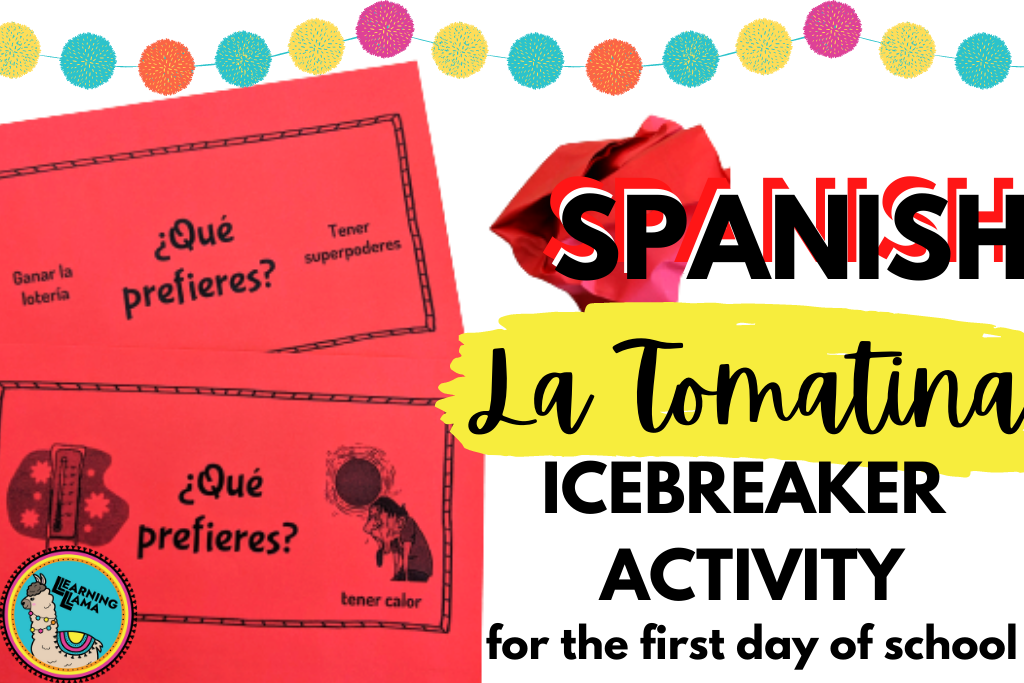
Videos to watch
Since you can’t… well shouldn’t have a tomato fight in your classroom, how will students get a sense of the greatness of La Tomatina? Videos are our best option. I recommend showing this video from Tío Spanish because it gives a novice introduction to the festival, combined with real-life footage of La Tomatina. If you want to just show real footage, the Official Tourism video is short, sweet, and to the point. Just be sure to stop it right before the end so you don’t show any alcohol.
I even use a fun video in my La Tomatina Escape Room! Students watch the video and answer questions. I like incorporating videos in my La Tomatina lessons because this is an event that words just can’t describe.
Oda al tomate by Pablo Neruda
This poem by Pablo Neruda is an ode that praises the tomato. With descriptive personification and very detailed imagery, the tomato comes to life. You can see, taste, touch, smell, and even hear the sounds of tomatoes on a hot summer day. For more advanced students, read and analyze the poem. This video analysis will help students to picture the figurative language. Before you read it, have your students identify vocabulary, play Pictionary or Taboo, and get some practice with the new terms.
The best part about reading Oda al tomate is the figurative language and personification of such an everyday item. Challenge your students by having them write an ode to another everyday item, such as a pen, a flower, a pillow, a soccer ball, or an ice cream cone! Encourage creativity, use of their 5 senses, and a final product that visually represents the item.
You can purchase the entire Oda al tomate lesson here to save time!
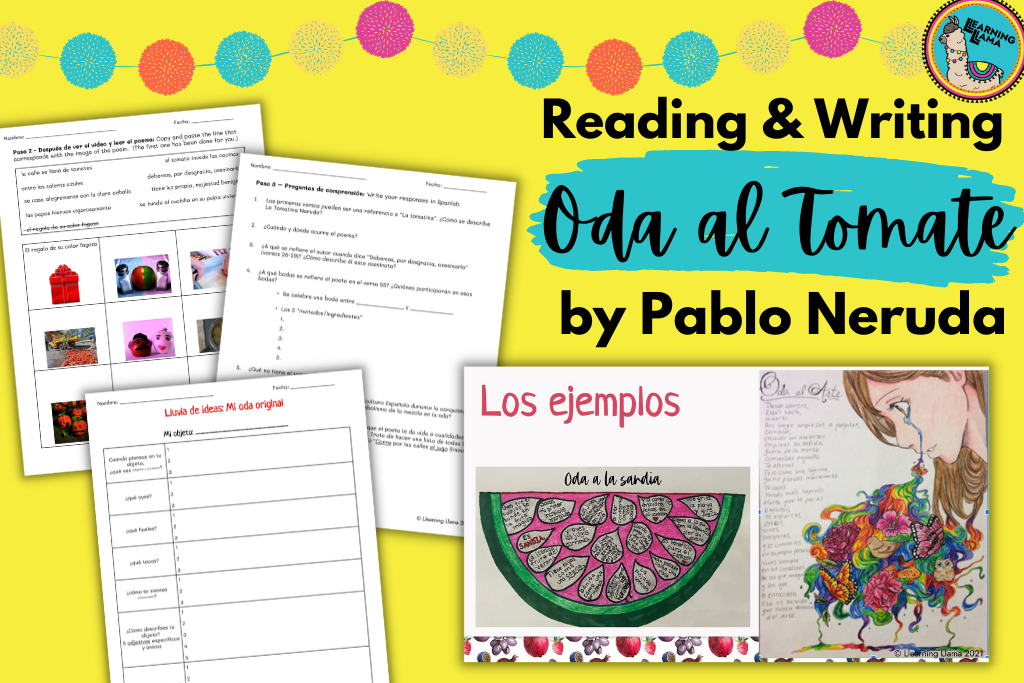
Infographics
If you participate in La Tomatina, it is very important to be safe! You have to follow La Tomatina rules and guidelines to be able to participate. With these infographics (novice & intermediate versions), your students will read the rules for joining in the fun. There are reading comprehension questions, too! You can also have your students create commands for participating in La Tomatina. It is a great exercise to reinforce how to form commands or ‘mandatos.’
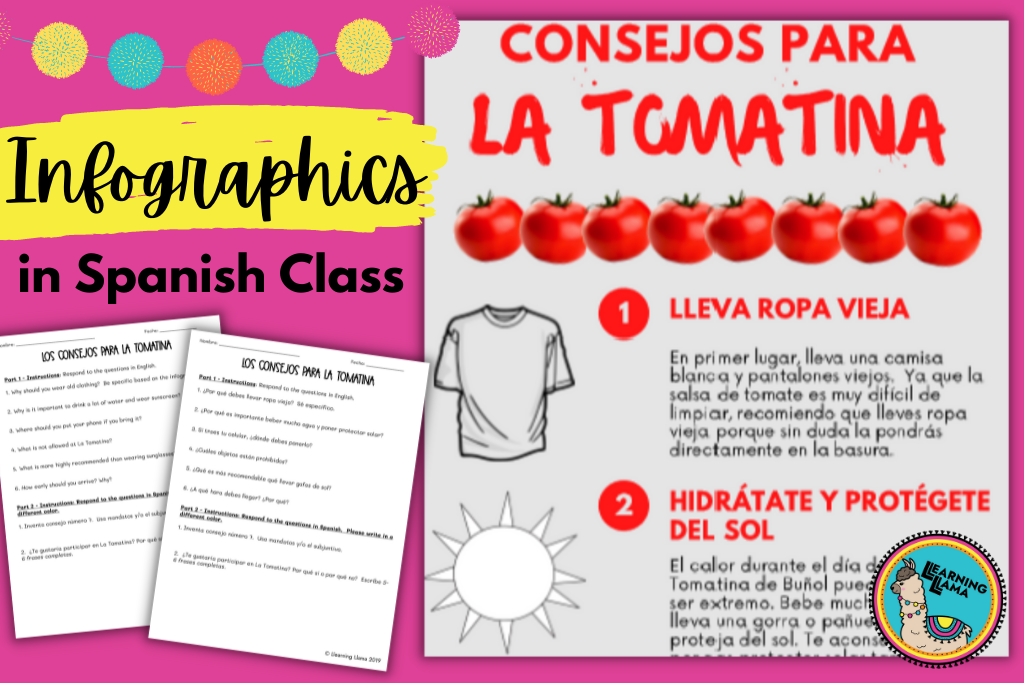
Escape Room
Give your students an authentic scenario, some puzzles, and a 60 minute time-limit. Watch them race to unlock all of their locks while working together in the target language! Learn to make your own escape room here or grab a copy of my La Tomatina Escape Room, complete with 5 puzzles, using authentic tweets, rules and advice, timeline of events, and much more!
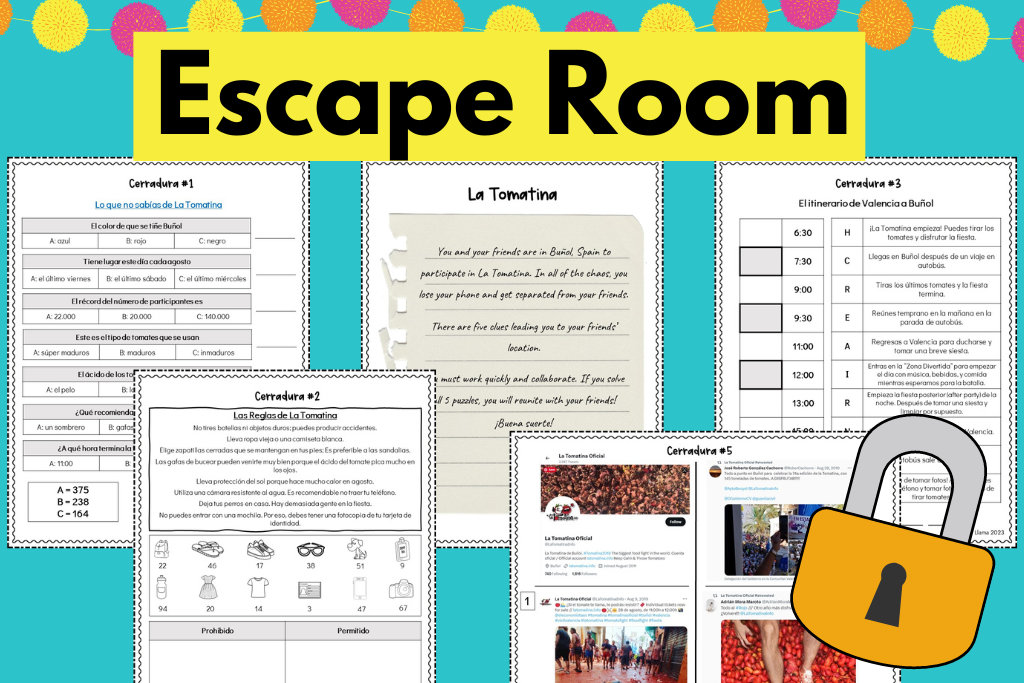
Memes
With such a fun festivity, why not share some fun memes, too!? Here are some of the memes I made over the past few years that usually get a laugh! One way to encourage creativity from your students is to have them create their own memes about La Tomatina. They can find any image online and turn it into a meme with this meme generator. Be sure to check out other ideas for using memes in Spanish class here.
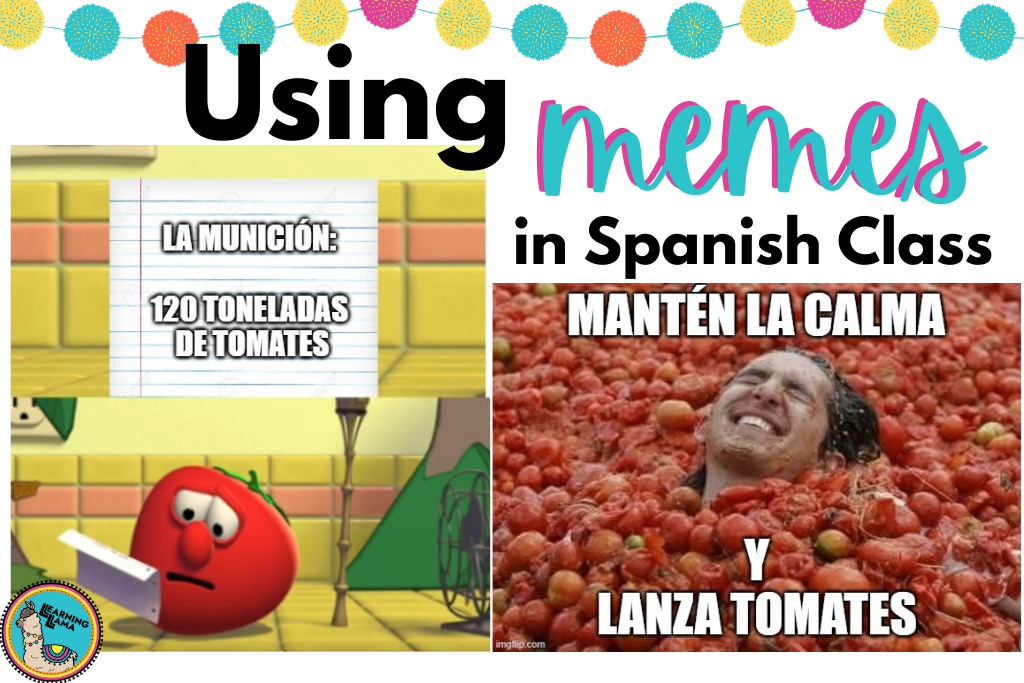
Webquest
What better way to experience a festival than actually imagining that you are going! With a webquest, your students can go to authentic sites, such as La Tomatina official website, train ticket, or Carrefour to purchase supplies. Give your students a checklist of things to do to prepare for their upcoming trip to Buñol. Then, direct them to the appropriate sites to complete the tasks. You can require them to submit screenshots or fill out a worksheet with their findings. Here is a pre made webquest with 5 interactive activities for your Spanish students.
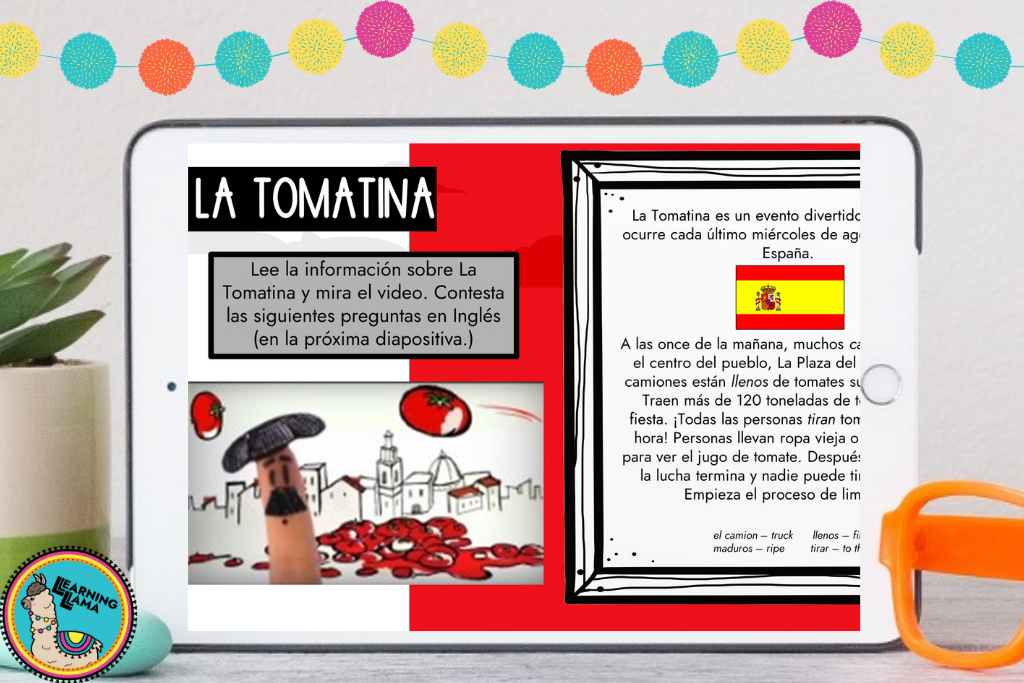
Bonus Idea: Cultural Comparison
One of the key components to a language class is the cultural comparison – how is the culture similar/different to your own culture? What products, practices, and perspectives (3 Ps) make up the culture or festival? This exercise is great preparation for the AP Spanish Language exam! You can have your students choose a festival that is similar to La Tomatina (Holi, water balloon fight at field day, pie eating contest, etc.). Have them brainstorm similarities and differences between the two celebrations. Make sure they are analyzing the 3 Ps for a complete analysis of the festival. Then, they can prepare a presentation, recording, or even an essay with their final comparison. For more info on ACTFL’s culture standards and the 3 Ps, check out this article from ACTFL.
Even though La Tomatina takes place in August, you can teach about it at any point in the school year. It is a great festival to include in a food unit, a celebrations unit, or a geography (Spain) unit! If you’re looking to purchase all of my La Tomatina lessons to save you time and money, check out this bundle for only $12.95!
Let me know in the comments if you try any of these lessons and how they go with your students!





